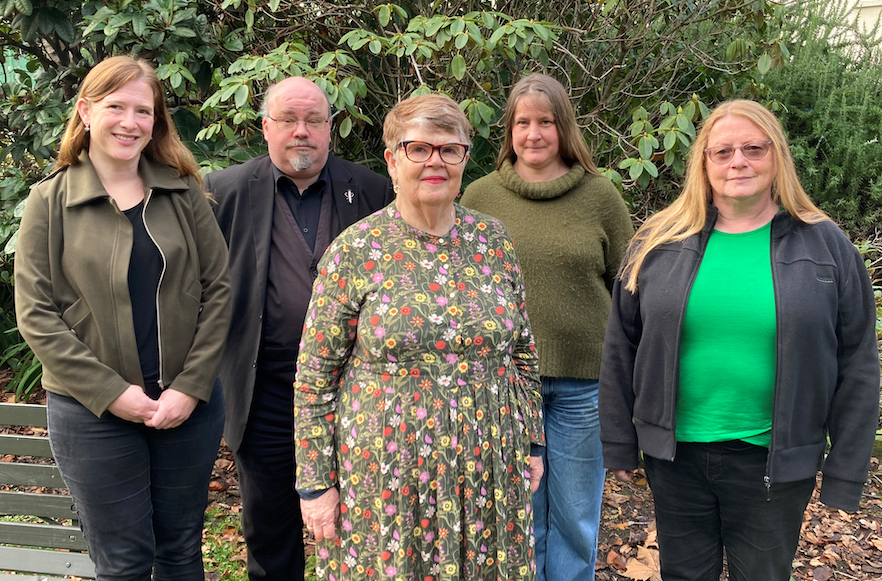 The NZCYES team from left: Karen Tustin, Andrew Wicken, Mavis Duncanson, Helena McAnally and Judith Adams.
The NZCYES team from left: Karen Tustin, Andrew Wicken, Mavis Duncanson, Helena McAnally and Judith Adams.
Identifying priorities for child health means you're a step closer to improving the outcomes, an Otago clinical epidemiologist says.
Dr Mavis Duncanson, a Senior Lecturer and Director of the Otago-based New Zealand Child and Youth Epidemiology Service (NZCYES), says reliable data, presented through statistics, is key to making positive change.
The NZCYES was a key partner in the Cure Kids' third State of Child Health report, released in May. The in-depth report highlights urgent health priorities for tamariki and rangatahi, based on national data from hospitalisations from 2000 to the end of 2021 for children and young people aged up to 18 years.
The current priorities are respiratory conditions, rheumatic fever and rheumatic heart disease, skin infections and mental health concerns.
The NZCYES was established in 2004, and since 2009 has been hosted by the University of Otago within the Department of Women's and Children's Health in the Dunedin School of Medicine.
Through its annual report series, the service provides the New Zealand health sector with timely and accurate information about the health of tamariki and rangatahi. The service highlights areas where there are disparities in child and youth health outcomes, and points out where inequities in service provision mean children and young people are not reaching their full potential. The service's findings can also help shape healthcare policy.
“The data we collate means the people involved in the planning, funding and delivery of healthcare services for children and young people have the information they need at their fingertips,” Dr Duncanson says.
The reports produced by the service provide national and regional pictures of the health and wellbeing of children and young people, looking at hospitalisations for issues and conditions such as injuries, vaccine-preventable diseases, and eating disorders, and mortality rates.
For Dr Duncanson and the four members of her team, a key part of their work is identifying patterns so it's clear what indicators of child and youth health are improving, deteriorating or are unchanged.
Their work helps highlight issues that need to be addressed and that can lead to changes being implemented. For example, the NZCYES produces the technical report for the Child Poverty Monitor, which started about a decade ago and contributed to the Child Poverty Reduction Act in 2018, which requires governments to set targets to reduce child poverty.
“What we do can help influence Government policy for the better.”
Dr Duncanson says in relation to the work on child poverty, “we are standing on the shoulders of all those who have gone before”, including former Children's Commissioners Dame Cindy Kiro, Dr Russell Wills and Judge Andrew Becroft.
The work of the NZCYES is funded by Te Whatu Ora, the Paediatric Society of New Zealand, the JR McKenzie Trust and Cure Kids.
The Cure Kids' report is produced in partnership with the NZCYES, the Paediatric Society of New Zealand and the Royal Australasian College of Physicians.
- Kōrero by Andrea Jones, Team Leader, Divisional Communications
